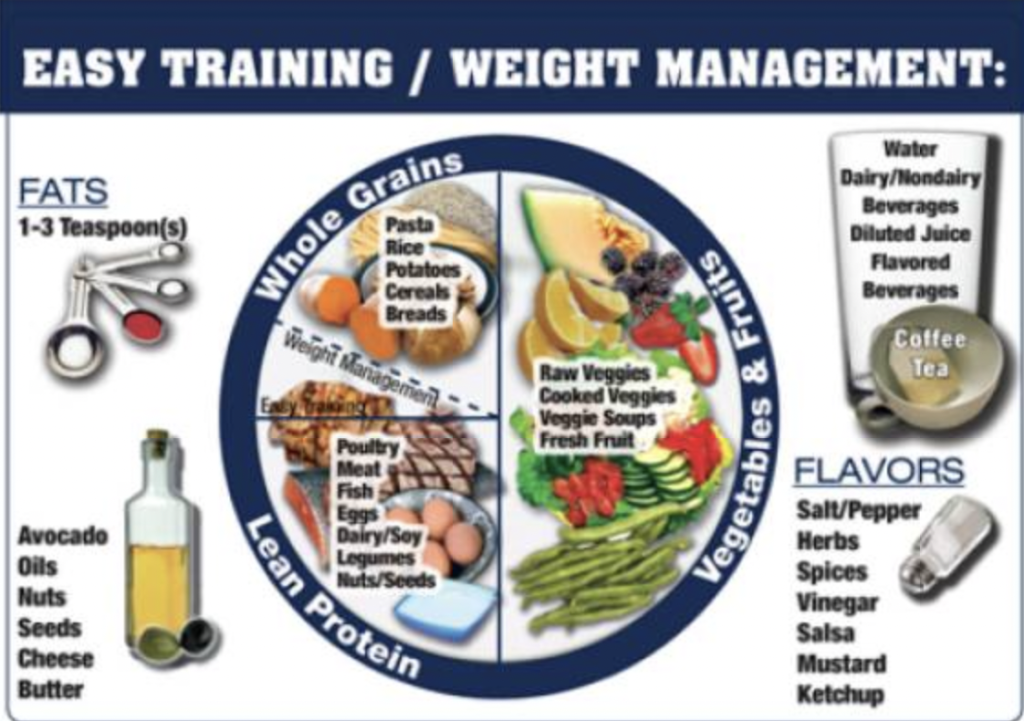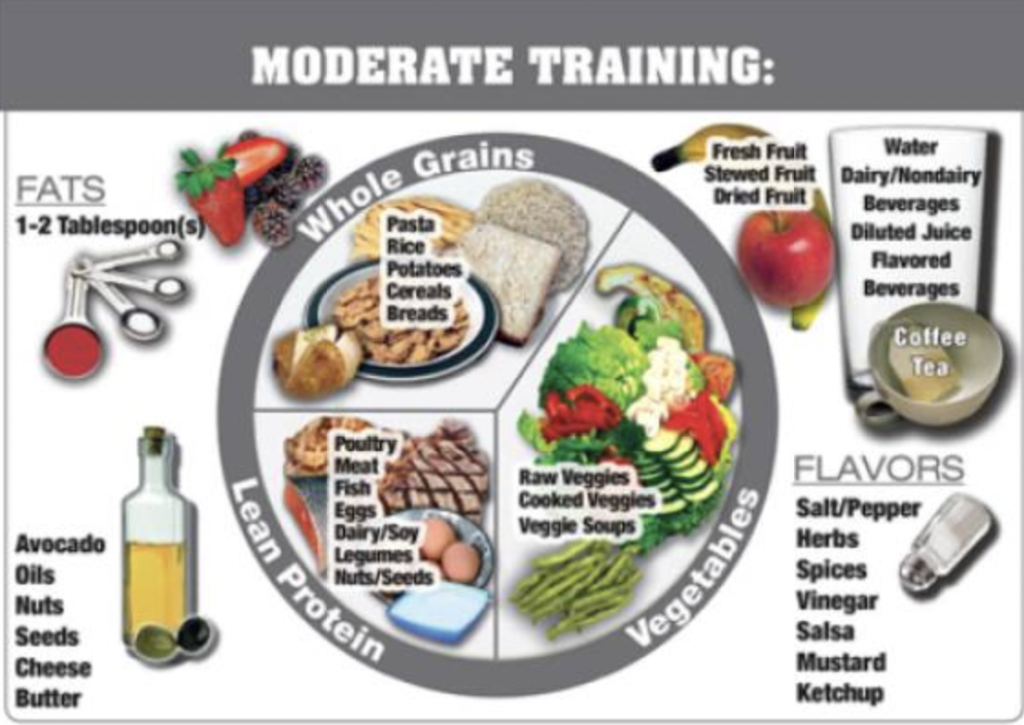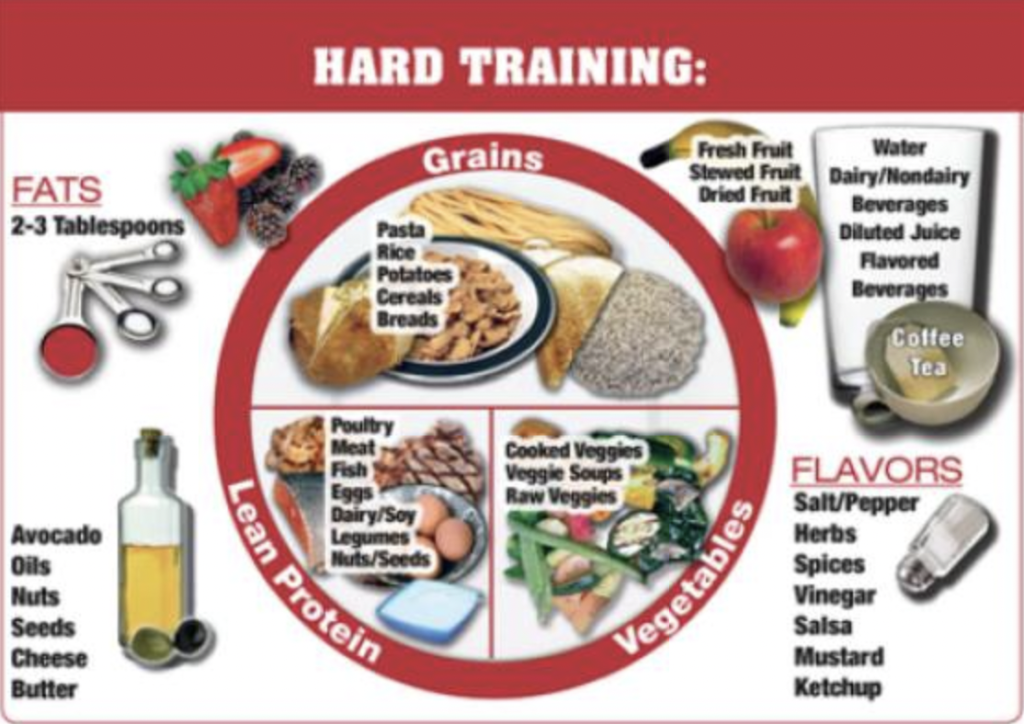As a person who participates in sports such as GAA and athletics, I always see my nutrition leading up to and after games or runs a vital component of my performance. This interest led me investigate and question sports nutrition and its link to climate change. In this article I look at sports nutrition in terms of the GAA and its contribution towards climate change as well as looking at small changes which can be made in a players diet in order to allow them to achieve maximum performance however, in a more sustainable manner.
From research it is evident that food production and processing have one of the biggest impacts on climate change, generating 26% of total greenhouse gas (GHG) emissions. Globally we use 61% of fresh water and 38% of ice-free land for food production and processing which contributes to these GHG emissions (Poore and Nemecek, 2018; Notarnicola et al., 2017; Reguant-Closa et al., 2020). Sources of these emissions along the food supply chain come from agricultural inputs, agricultural production and food processing as well as distribution, retail and waste of such food products (Notarnicola et al., 2017; Ridoutt et al., 2017; Vermeulen et al., 2012; Reguant-Closa et al., 2020). Foods have a varying environmental impact with some foods such as animal proteins like red meat producing more GHGs and using a larger proportion of water and land than plant-based proteins such as chickpeas etc. (Gerber et al., 2013; Sranacharoenpong et al., 2015; Reguant-Closa et al., 2020). Therefore not only the athlete but the average consumer needs to be more conscious in relation to their daily food choices and their environmental impact (Reguant-Closa et al., 2020).
Gaelic football and hurling is apart of the GAA organisation and are invasion-based team sports indigenous to Ireland (Cassidy et al., 2018; Reilly et al., 2015; Ó Catháin et al., 2020). It is considered an amateur sport however, there is a high level of competition, and players often have similar physiological characteristics and demands of elite professionals in other sports with them attending high volume periodised training where skills and drills are practiced to emanate games as well as playing a high intensity games once every 1-2 weeks (Cassidy et al., 2018; Beasley, 2015; Reilly et al., 2002; Ó Catháin et al., 2020).
Sport nutrition recommendations are often different for athletes in comparison to the general population and they're are numerous guidelines around sports nutrition in relation to micro and macro nutrients before and after training loads (Thomas et al., 2016; Reguant-Closa et al., 2020). This is also true for GAA players. Pre-match nutrition is always considered very important in terms of the GAA and needs to reflect the energy expenditure a player uses during a match in order to maximise performance (Burke et al., 2011; Ó Catháin et al., 2020). In terms of fueling before a match or training typical recommendations are that the meal should contain 30-50g of carbohydrate and 5-10g of protein. Fueling after games or training is also very important to aid muscle recovery post match. In terms of fueling post-match it is recommended that players eat 80-120g of carbohydrates and 20-40g of protein post-match (Building Champions Through Innovation).
A good way of looking at how a GAA player or any athlete or active person fuels themselves is by looking at the Athletes Plate (AP) concept (Reguant-Closa et al., 2020). The AP concept is a nutrition tool designed for athletes and active people to help themselves adjust food intake in accordance to changes in training volume and intensity or training load (Foster et al., 2001; Reguant-Closa et al., 2020). This food tool differs from those which is given to the general population as it adjusts the composition of major food groups on the plate in accordance to the players training load as seen in figures 1-3 below. Training loads are broken up into 3 categories and the players nutrition is then designed around the type or training/ how much training load they have on that particular day (Reguant-Closa et al., 2020).
We can see carbohydrates and and fat intakes vary in relation to training loads under this concept (Reguant-Closa et al., 2020). In terms of protein it is recommended that athletes consumes between 150-250% higher than what is recommended for the average person (Thomas et al., 2016; Moore et al., 2014; Phillips and Van Loon, 2011; Reguant-Closa et al., 2020). In terms of these recommended proteins, sports nutritionists often recommend those that contain amino acids especially leucine, to encourage muscle protein synthesis and repair. For this reason animal and dairy proteins are often promoted in terms of sports nutrition especially post-exercise (Burd et al., 2015; Reguant-Closa et al., 2020). However, with these proteins being discriminated against because of their environmental impact we now need to look at how the GAA player can achieve optimal nutrition pre and post match and training in a somewhat environmentally sustainable manner.



From the evidence provided above we can say that generally athletes diets are higher in protein than that which is recommended in the average daily diet (Parnell et al., 2016; Gillen et al., 2017; Meyer and Reguant-Closa, 2017). Thomas et al. (2016) states that in recent years the athletes protein recommendation has increased with Churchward-Venne et al., (2013) suggesting than on average an athlete should be consuming 1.2-2g/kg of body weight of protein on a daily basis. However, even with this increase Meyer and Reguant-Closa, (2017) mentions that its not the increase which is the problem but rather the sources of protein in which the athlete is consuming. Therefore, in order to reduce the environmental impact of the GAA players diet or any athletes diet in the case one must examine their protein sources and instead of getting a large amount of protein from animal sources such as red meat, dairy and eggs they should instead consider switching some of these protein sources for plant based protein sources.
Aiking (2014) recommended that an athlete could cut one third of their meat protein (especially red meat) and replace it with a plant based protein (beans including soy, grain, nuts, seeds). The meat they do consume should be grass-fed or pasture fed animal protein sources which are a higher quality meat which has higher levels of omega 3, carry acids and antioxidants and additionally require less agricultural chemicals and antibiotic residues in production (Aiking, 2014; Meyer and Reguant-Closa, 2017; Daley et al., 2010). It is also recommend by Aiking (2014) that protein can come from cleaner animal sources such as chicken, pork and eggs as they have less of an environmental impact as red meat.
Another alternative GHG friendly protein alternative suggested by Meyer and Reguant-Closa, (2017) is insects. They are very nutritious with numerous vitamins and minerals with similar amounts of protein as livestock meat as well as being a good source of fatty acids (Meyer and Reguant-Closa, 2017). They have a high efficient feed to protein conversion rate and require very little water allowing them to have a lower GHG impact (Van Huis et al., 2013; Meyer and Reguant-Closa, 2017). They have become a viable option for post exercise recovery however, we must note that are hard to access in the Irish market which makes them somewhat unsuitable for a GAA players sustainable diet.
A huge amount of food waste comes from the consumer level because aesthetically the product no longer meets the consumers want, because of the sell-by date (Gustavsson et al., 2011; Meyer and Reguant-Closa, 2017) or simply because too much food was either bought or cooked and uneaten (Parfitt et al., 2010; Meyer and Reguant-Closa, 2017). Globally, about a third of food goes to waste meaning the production and transportation has also gone to waste (Jeremy Plaster, 2021). This global waste issue is contributing to 8-10% of global GHG's (Jeremy Plaster, 2021). In terms of the GAA player (but can also be applied to everyone) we can cut their food waste through simple planning and preparation. Meyer and Reguant-Closa, (2017) suggests that if athletes are thought how to cook and prepare food in advance and then store in (for example freeze it) in a safe manner then it could cut down on a lot of food waste. Their nutritionist can help in terms of planning the players week ahead of time in terms of shopping and cooking so the player knows when, what and how much to cook for the week in relation to their training and match schedule. With it being planned in advance it means first of all their meals are all prepared for them and second ensures they are just buying what groceries they need for the week and no extras which could contribute to the food waste. This cooking and planning ahead of time is identified as crucial for reducing food waste not only for athletes such as GAA players but also for the general population (Parfitt et al., 2010; Meyer and Reguant-Closa, 2017).
In conclusion in terms of GAA nutrition there are small changes which could be made to make the players diet more sustainable while still achieving maxim performance potential and maximum recovery post match or training.
Bibliography
AIKING, H. 2014. Protein production: planet, profit, plus people? The American Journal of Clinical Nutrition,100, 483S-489S.
BEASLEY, K. J. 2015. Nutrition and Gaelic Football: Review, Recommendations, and Future Considerations. International Journal of Sport Nutrition and Exercise Metabolism, 25, 1-13.
BUILDING CHAMPIONS THROUGH INNOVATION Undated. Gaelic Performance Ntritional Resource Manual
BURD, N. A., GORISSEN, S. H., VAN VLIET, S., SNIJDERS, T. & VAN LOON, L. J. 2015. Differences in postprandial protein handling after beef compared with milk ingestion during postexercise recovery: a randomized controlled trial. The American Journal of Clinical Nutrition, 102, 828-836.
BURKE, L. M., HAWLEY, J. A., WONG, S. H. S. & JEUKENDRUP, A. E. 2011. Carbohydrates for training and competition. Journal of Sports Sciences, 29, S17-S27.
CASSIDY, C., COLLINS, K. & SHORTALL, M. 2018. The Precompetition Macronutrient Intake of Elite Gaelic Football Players. International Journal of Sport Nutrition and Exercise Metabolism, 28, 574-579.
CHURCHWARD-VENNE, T. A., MURPHY, C. H., LONGLAND, T. M. & PHILLIPS, S. M. 2013. Role of protein and amino acids in promoting lean mass accretion with resistance exercise and attenuating lean mass loss during energy deficit in humans. Amino Acids, 45, 231-240.
DALEY, C. A., ABBOTT, A., DOYLE, P. S., NADER, G. A. & LARSON, S. 2010. A review of fatty acid profiles and antioxidant content in grass-fed and grain-fed beef. Nutrition Journal, 9, 10.
FOSTER, C., FLORHAUG, J. A., FRANKLIN, J., GOTTSCHALL, L., HROVATIN, L. A., PARKER, S., DOLESHAL, P. & DODGE, C. 2001. A new approach to monitoring exercise training. J Strength Cond Res, 15, 109-15.
GERBER, P. J., STEINFELD, H., HENDERSON, B., MOTTET, A., OPIO, C., DIJKMAN, J., FALCUCCI, A. & TEMPIO, G. 2013. Tackling climate change through livestock: a global assessment of emissions and mitigation opportunities, Food and Agriculture Organization of the United Nations (FAO).
GILLEN, J. B., TROMMELEN, J., WARDENAAR, F. C., BRINKMANS, N. Y. J., VERSTEEGEN, J. J., JONVIK, K. L., KAPP, C., DE VRIES, J., VAN DEN BORNE, J. J. G. C., GIBALA, M. J. & VAN LOON, L. J. C. 2017. Dietary Protein Intake and Distribution Patterns of Well-Trained Dutch Athletes. International Journal of Sport Nutrition and Exercise Metabolism, 27, 105-114.
GUSTAVSSON, J., CEDERBERG, C., SONESSON, U., OTTERDIJK, R. & MEYBECK, A. 2011. Global Food Losses and Food Waste- Extent, Causes and Prevention.
JEREMY PLASTER. 2021. How Food Waste is Huge Contributor to Climate Change [Online]. The Guardian. Available: https://www.theguardian.com/news/2021/sep/04/how-food-waste-is-huge-contributor-to-climate-change [Accessed 05/04/2022].
MEYER, N. & REGUANT-CLOSA, A. 2017. "Eat as If You Could Save the Planet and Win!" Sustainability Integration into Nutrition for Exercise and Sport. Nutrients, 9, 412.
MOORE, D. R., CHURCHWARD-VENNE, T. A., WITARD, O., BREEN, L., BURD, N. A., TIPTON, K. D. & PHILLIPS, S. M. 2014. Protein Ingestion to Stimulate Myofibrillar Protein Synthesis Requires Greater Relative Protein Intakes in Healthy Older Versus Younger Men. The Journals of Gerontology: Series A,70, 57-62.
NOTARNICOLA, B., SALA, S., ANTON, A., MCLAREN, S. J., SAOUTER, E. & SONESSON, U. 2017. The role of life cycle assessment in supporting sustainable agri-food systems: A review of the challenges. Journal of Cleaner Production, 140, 399-409.
Ó CATHÁIN, C., FLEMING, J., RENARD, M. & KELLY, D. 2020. Dietary Intake of Gaelic Football Players during Game Preparation and Recovery. Sports (Basel, Switzerland), 8, 62.
PARFITT, J., BARTHEL, M. & MACNAUGHTON, S. 2010. Food waste within food supply chains: quantification and potential for change to 2050. Philos Trans R Soc Lond B Biol Sci, 365, 3065-81.
PARNELL, J. A., WIENS, K. P. & ERDMAN, K. A. 2016. Dietary Intakes and Supplement Use in Pre-Adolescent and Adolescent Canadian Athletes. Nutrients, 8, 526.
PHILLIPS, S. M. & VAN LOON, L. J. C. 2011. Dietary protein for athletes: From requirements to optimum adaptation. Journal of Sports Sciences, 29, S29-S38.
POORE, J. & NEMECEK, T. 2018. Reducing food's environmental impacts through producers and consumers. Science, 360, 987-992.
REGUANT-CLOSA, A., ROESCH, A., LANSCHE, J., NEMECEK, T., LOHMAN, T. G. & MEYER, N. L. 2020. The Environmental Impact of the Athlete's Plate Nutrition Education Tool. Nutrients, 12, 2484.
REILLY, B., AKUBAT, I., LYONS, M. & COLLINS, D. K. 2015. Match-Play Demands of Elite Youth Gaelic Football Using Global Positioning System Tracking. The Journal of Strength & Conditioning Research,29, 989-996.
REILLY, T., SPINKS, W. & MURPHY, A. 2002. Science and Football IV: Proceedings of the Fourth World Congress of Science and Football, Sydney, Australia, 22-26 February 1999, Routledge.
RIDOUTT, B. G., HENDRIE, G. A. & NOAKES, M. 2017. Dietary Strategies to Reduce Environmental Impact: A Critical Review of the Evidence Base. Advances in Nutrition, 8, 933-946.
SRANACHAROENPONG, K., SORET, S., HARWATT, H., WIEN, M. & SABATÉ, J. 2015. The environmental cost of protein food choices. Public Health Nutr, 18, 2067-73.
THOMAS, D. T., ERDMAN, K. A. & BURKE, L. M. 2016. American College of Sports Medicine Joint Position Statement. Nutrition and Athletic Performance. Med Sci Sports Exerc, 48, 543-68.
VAN HUIS, A., VAN ITTERBEECK, J., KLUNDER, H., MERTENS, E., HALLORAN, A., MUIR, G. & VANTOMME, P. 2013. Edible insects: future prospects for food and feed security, Food and agriculture organization of the United Nations.
VERMEULEN, S. J., CAMPBELL, B. M. & INGRAM, J. S. I. 2012. Climate Change and Food Systems. Annual Review of Environment and Resources, 37, 195-222.
